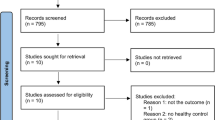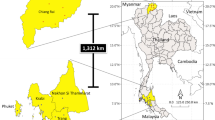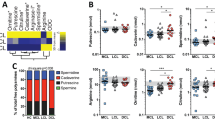Abstract
Functional variations in the mannose-binding lectin (MBL2) gene causing low levels of serum MBL are associated with susceptibility to numerous infectious diseases. We investigated whether there is genetic association of MBL2 variant alleles with cutaneous leishmaniasis (CL) caused by Leishmania guyanensis. We used PCR-restriction fragment length polymorphism to genotype six MBL2 variants, three in the promoter region and three in the exon 1. An association was noted between the single nucleotide polymorphism −221X/Y of the MBL2 gene and CL (P=2.9 × 10−6; odds ratio (OR)=1.9 (1.4–2.5) consistent with the hypothesis that the −221X allele confers high risk to development of CL among L. guyanensis-infected individuals. Furthermore, L. guyanensis-infected individuals bearing the codon 57 allele C had a higher risk of developing CL (P=5 × 10−5; OR=1.9 (1.4–2.6)). The low MBL expressor haplotype LXPB was also associated to CL (P=6 × 10−4). This study raises the possibility that functional polymorphisms in MBL2 gene play a role in clinical outcome of Leishmania infection.
This is a preview of subscription content, access via your institution
Access options
Subscribe to this journal
Receive 6 digital issues and online access to articles
$119.00 per year
only $19.83 per issue
Buy this article
- Purchase on Springer Link
- Instant access to full article PDF
Prices may be subject to local taxes which are calculated during checkout

Similar content being viewed by others
References
Alvar J, Vélez ID, Bern C, Herrero M, Desjeux P, Cano J et al. Leishmaniasis worldwide and global estimates of its incidence. PLoS One 2012; 7: e35671.
Hotez PJ, Remme JH, Buss P, Alleyne G, Morel C, Breman JG . Combating tropical infectious diseases: report of the Disease Control Priorities in Developing Countries Project. Clin Infect Dis 2004; 38: 871–878.
Handman E, Elso C, Foote S . Genes and susceptibility to leishmaniasis. Adv Parasitol 2005; 59: 1–75.
Grimaldi Jr G, Tesh RB . Leishmaniases of the New World: current concepts and implications for future research. Clin Microbiol Rev 1993; 6: 230–250.
Marsden PD . Mucosal leishmaniasis (‘espundia’ Escomel, 1911). Trans R Soc Trop Med Hyg 1986; 80: 859–876.
Castellucci L, Cheng LH, Araújo C, Guimarães LH, Lessa H, Machado P et al. Familial aggregation of mucosal leishmaniasis in northeast Brazil. Am J Trop Med Hyg 2005; 73: 69–73.
Alcaïs A, Abel L, David C, Torrez ME, Flandre P, Dedet JP . Evidence for a major gene controlling susceptibility to tegumentary leishmaniasis in a recently exposed Bolivian population. Am J Hum Genet 1997; 61: 968–979.
Castellucci LC, Almeida LF, Jamieson SE, Fakiola M, Carvalho EM, Blackwell JM . Host genetic factors in American cutaneous leishmaniasis: a critical appraisal of studies conducted in an endemic area of Brazil. Mem Inst Oswaldo Cruz 2014; 109: 279–288.
Eisen DP, Minchinton RM . Impact of mannose-binding lectin on susceptibility to infectious diseases. Clin Infect Dis 2003; 37: 1496–1505.
Ambrosio AR, De Messias-Reason IJ . Leishmania (Viannia) braziliensis: interaction of mannose-binding lectin with surface glycoconjugates and complement activation. An antibody-independent defence mechanism. Parasite Immunol 2005; 27: 333–340.
Santos IK, Costa CH, Krieger H, Feitosa MF, Zurakowski D, Fardin B et al. Mannan-binding lectin enhances susceptibility to visceral leishmaniasis. Infect Immun 2001; 69: 5212–5215.
Alonso DP, Ferreira AF, Ribolla PE, de Miranda Santos IK, do Socorro Pires e Cruz M, Aécio de Carvalho F et al. Genotypes of the mannan-binding lectin gene and susceptibility to visceral leishmaniasis and clinical complications. J Infect Dis 2007; 195: 1212–1217.
Garred P, Madsen HO, Hofmann B, Svejgaard A . Increased frequency of homozygosity of abnormal mannan-binding-protein alleles in patients with suspected immunodeficiency. Lancet 1995; 346: 941–943.
Summerfield JA, Ryder S, Sumiya M, Thursz M, Gorchein A, Monteil MA et al. Mannose binding protein gene mutations associated with unusual and severe infections in adults. Lancet 1995; 345: 886–889.
Bellamy R, Ruwende C, McAdam KP, Thursz M, Sumiya M, Summerfield J et al. Mannose binding protein deficiency is not associated with malaria, hepatitis B carriage or tuberculosis in Africans. QJM 1998; 91: 13–18.
Garred P, Richter C, Andersen AB, Madsen HO, Mtoni I, Svejgaard A et al. Mannan-binding lectin in the sub- Saharan HIV and tuberculosis epidemics. Scand J Immunol 1997; 46: 204–208.
Hoal-Van Helden EG, Epstein J, Victor TC, Hon D, Lewis LA, Beyers N et al. Mannose-binding protein B allele confers protection against tuberculous meningitis. Pediatr Res 1999; 45: 459–464.
Lipscombe RJ, Sumiya M, Hill AV, Lau YL, Levinsky RJ, Summerfield JA et al. High frequencies in African and non-African populations of independent mutations in the mannose binding protein gene. Hum Mol Genet 1992; 1: 709–715.
Takahashi K, Gordon J, Liu H, Sastry KN, Epstein JE, Motwani M et al. Lack of mannose-binding lectin-A enhances survival in a mouse model of acute septic peritonitis. Microbes Infect 2002; 4: 773–784.
Hamdi S, Ejghal R, Idrissi M, Ezzikouri S, Hida M, Soong L et al. A variant in the promoter of MBL2 is associated with protection against visceral leishmaniasis in Morocco. Infect Genet Evol 2013; 13: 162–167.
Badaró R, Jones TC, Lorenço R, Cerf BJ, Sampaio D, Carvalho EM et al. A prospective study of visceral leishmaniasis in an endemic area of Brazil. J Infect Dis 1986; 154: 639–649.
Locksley RM . Flying doctors. Nat Immunol 2000; 1: 457–458.
Kamhawi S, Belkaid Y, Modi G, Rowton E, Sacks D . Protection against cutaneous leishmaniasis resulting from bites of uninfected sand flies. Science 2000; 290: 1351–1354.
Anstead GM, Chandrasekar B, Zhao W, Yang J, Perez LE, Melby PC . Malnutrition alters the innate immune response and increases early visceralization following Leishmania donovani infection. Infect Immun 2001; 69: 4709–4718.
Garcia L, Kindt A, Bermudez H, Llanos-Cuentas A, De Doncker S, Arevalo J et al. Culture-independent species typing of neotropical Leishmania for clinical validation of a PCR-based assay targeting heat shock protein 70 genes. J Clin Microbiol 2004; 42: 2294–2297.
Marfurt J, Nasereddin A, Niederwieser I, Jaffe CL, Beck HP, Felger I . Identification and differentiation of Leishmania species in clinical samples by PCR amplification of the miniexon sequence and subsequent restriction fragment length polymorphism analysis. J Clin Microbiol 2003; 41: 3147–3153.
Madsen HO, Garred P, Kurtzhals JA, Lamm LU, Ryder LP, Thiel S et al. A new frequent allele is the missing link in the structural polymorphism of the human mannan-binding protein. Immunogenetics 1994; 40: 37–44.
Lipscombe RJ, Sumiya M, Summerfield JA, Turner MW . Distinct physicochemical characteristics of human mannose binding protein expressed by individuals of differing genotype. Immunology 1995; 85: 660–667.
Madsen HO, Garred P, Thiel S, Kurtzhals JA, Lamm LU, Ryder LP et al. Interplay between promoter and structural gene variants control basal serum level of mannan-binding protein. J Immunol 1995; 155: 3013–3020.
Madsen HO, Satz ML, Hogh B, Svejgaard A, Garred P . Different molecular events result in low protein levels of mannan-binding lectin in populations from southeast Africa and South America. J Immunol 1998; 161: 3169–3175.
Acknowledgements
This work was funded by the Brazilian Council for Scientific and technological Development (CNPq) to RR (grant number: Processo 404181/2012-0).
Author information
Authors and Affiliations
Corresponding author
Ethics declarations
Competing interests
The authors declare no conflict of interest.
Additional information
Supplementary Information accompanies this paper on Genes and Immunity website
Supplementary information
Rights and permissions
About this article
Cite this article
de Araujo, F., Mesquita, T., da Silva, L. et al. Functional variations in MBL2 gene are associated with cutaneous leishmaniasis in the Amazonas state of Brazil. Genes Immun 16, 284–288 (2015). https://doi.org/10.1038/gene.2015.6
Received:
Revised:
Accepted:
Published:
Issue Date:
DOI: https://doi.org/10.1038/gene.2015.6



